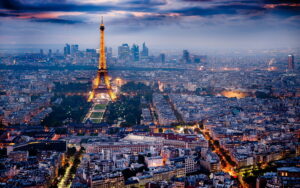Tourism is a major industry that bridges cultures, enriches economies, and allows travelers to explore the rich diversity of the world. Thanks to artificial intelligence (AI), we can now access highly accurate, detailed, and smartly organized information on various destinations around the globe. AI enables us to delve deep into every aspect of a city, from its historical background to its current tourist attractions, providing a more informed and seamless travel planning experience. In this guide, we’ll explore ten of the best tourist cities in Europe, offering precise and detailed insights into their history, geography, key tourist attractions, local culture, food, and accommodations. These cities are ranked based on their popularity, cultural significance, and unique offerings that attract tourists from all over the world.
1. Paris, France
History:
Known as the “City of Light,” Paris has been a center of art, culture, and politics since the Middle Ages. From the French Revolution to the World Wars, Paris has played a pivotal role in European history. Its historical landmarks reflect centuries of cultural evolution.
Geography:
Situated on the banks of the River Seine in northern France, Paris is known for its flat terrain with slight hills like Montmartre. Its central location makes it easily accessible from other European capitals.
Top Attractions:
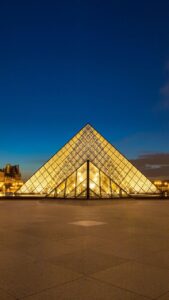
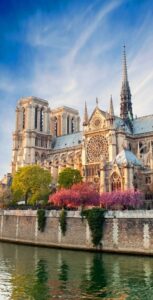
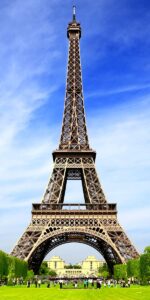

-
- Eiffel Tower: The most iconic symbol of France.
-
- Louvre Museum: Home to the Mona Lisa and countless other masterpieces.
-
- Notre-Dame Cathedral: A stunning example of French Gothic architecture.
-
- Montmartre: A historic district known for its artistic heritage and the Sacré-Cœur Basilica.
Best Hotels:
-
- Le Meurice: Luxury accommodation with a blend of classic and contemporary design.
-
- Hôtel Plaza Athénée: Famous for its fashionable location and world-class service.
People and Food:
Parisians are known for their elegance, intellectualism, and appreciation of fine arts. French cuisine is globally renowned, with croissants, baguettes, escargot, and coq au vin being some of the must-try dishes. The city’s café culture is iconic, offering an authentic Parisian experience.
2. Rome, Italy
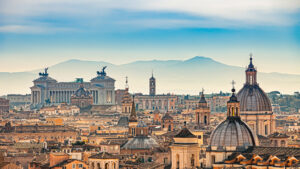
History:
Rome is often referred to as the “Eternal City” due to its nearly 3,000 years of history. As the capital of the Roman Empire and the seat of the Catholic Church, it has been a major center for politics, culture, and religion for centuries.
Geography:
Located in the central-western part of Italy along the Tiber River, Rome is known for its seven hills and its proximity to the Mediterranean Sea, giving it a temperate climate.
Top Attractions:
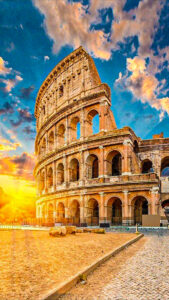
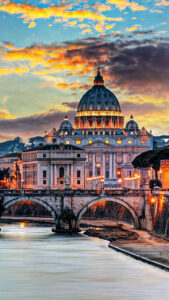
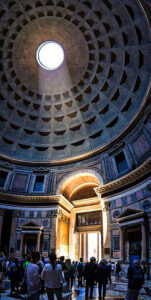
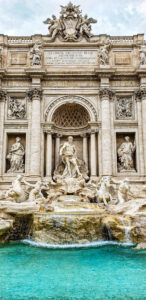
View of Rome from Castel Sant’Angelo, Italy
-
- Colosseum: The largest ancient amphitheater in the world.
-
- Vatican City: Home to St. Peter’s Basilica, the Sistine Chapel, and the Pope.
-
- Pantheon: A well-preserved ancient Roman temple.
-
- Trevi Fountain: Known for its stunning baroque design and the tradition of tossing coins.
Best Hotels:
-
- Hotel de Russie: A luxury hotel known for its elegant gardens and central location.
-
- Hassler Roma: A historic hotel offering panoramic views of the city.
People and Food:
Romans are known for their passion, warmth, and love for life. Italian cuisine is world-famous, and in Rome, you can enjoy traditional dishes like carbonara, cacio e pepe, and saltimbocca alla romana. Gelato is also a favorite treat for visitors.
3. London, United Kingdom
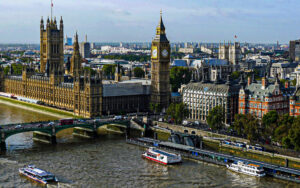
History:
As the capital of England and the United Kingdom, London has a rich history that dates back to Roman times. It has been a key city in world politics, economics, and culture for centuries, with landmarks from its royal past and industrial revolution era.
Geography:
Located on the River Thames in southeastern England, London is known for its relatively flat landscape with a temperate maritime climate. Its location makes it an ideal starting point for exploring the rest of Europe.
Top Attractions:
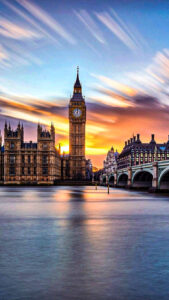
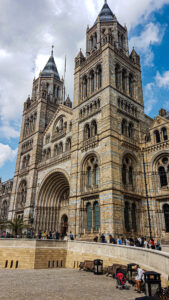
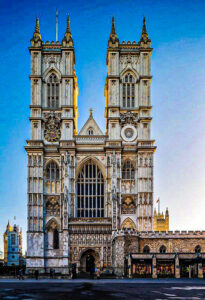
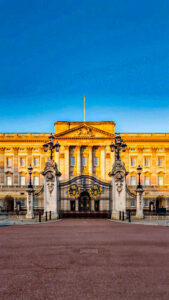
-
- Big Ben and the Houses of Parliament: Iconic symbols of British democracy.
-
- The British Museum: Housing treasures from around the world, including the Rosetta Stone.
-
- Tower of London: Famous for its history as a royal palace and prison.
-
- Buckingham Palace: The official residence of the British monarch.
Best Hotels:
-
- The Ritz London: Renowned for its elegance and traditional afternoon tea.
-
- Claridge’s: A luxury hotel known for its sophisticated style and history.
People and Food:
Londoners are known for their politeness and diverse cultural backgrounds. The food scene in London is a reflection of the city’s multicultural population, with traditional British dishes like fish and chips and roast beef coexisting alongside global cuisines from India, China, and the Middle East.
4. Barcelona, Spain
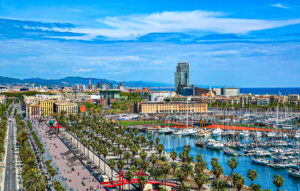
History:
Barcelona has a long and complex history, having been a Roman city, a medieval kingdom, and a hub of Catalan culture. Its unique mix of Gothic and modernist architecture reflects its vibrant history and artistic legacy.
Geography:
Located on the northeastern coast of Spain, Barcelona enjoys a Mediterranean climate with mild winters and warm summers. Its coastal location and proximity to the mountains make it a favorite destination for nature lovers.
Top Attractions:
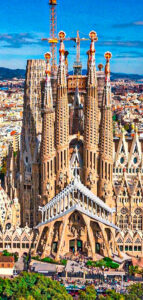
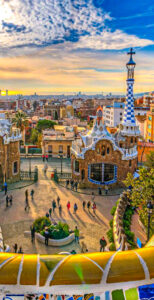
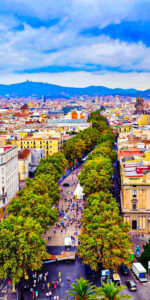
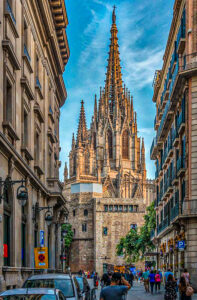
CREATOR: gd-jpeg v1.0 (using IJG JPEG v80), quality = 90
-
- La Sagrada Família: Antoni Gaudí’s masterpiece, still under construction.
-
- Park Güell: Another Gaudí creation, offering colorful mosaics and panoramic views of the city.
-
- La Rambla: A bustling street filled with shops, cafes, and street performers.
-
- Gothic Quarter: Known for its medieval buildings and narrow streets.
Best Hotels:
-
- Hotel Arts Barcelona: A luxury hotel with stunning views of the Mediterranean.
-
- Majestic Hotel & Spa: Located on Passeig de Gràcia, it combines elegance with modern comfort.
People and Food:
Catalans are proud of their cultural identity, language, and traditions. Barcelona’s food scene is equally diverse, with local specialties such as paella, tapas, and crema catalana. Seafood is a staple, thanks to the city’s coastal location.
5. Amsterdam, Netherlands
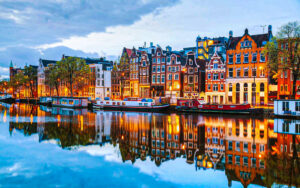
History:
Amsterdam was founded in the 12th century as a small fishing village but quickly grew into a major center of trade during the Dutch Golden Age in the 17th century. Its history is reflected in the well-preserved canals and gabled houses.
Geography:
Amsterdam is located in the northwestern part of the Netherlands, built around a series of concentric canals. The city’s flat terrain makes it ideal for cycling, which is the most popular mode of transportation.
Top Attractions:
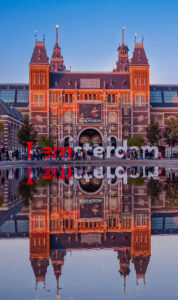
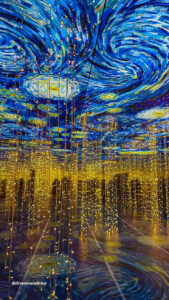
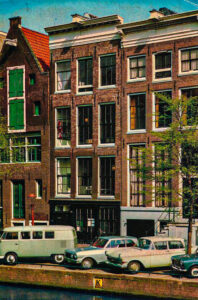
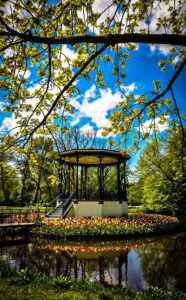
Night city view of Amsterdam, the Netherlands with Amstel river
-
- Rijksmuseum: Featuring works by Rembrandt and Vermeer.
-
- Van Gogh Museum: Home to the world’s largest collection of Van Gogh’s paintings.
-
- Anne Frank House: The wartime home of Anne Frank, now a moving museum.
-
- Vondelpark: A large urban park perfect for leisurely strolls and picnics.
Best Hotels:
-
- Waldorf Astoria Amsterdam: Located on the city’s historic canal ring.
-
- Pulitzer Amsterdam: A luxury hotel offering unique rooms spread across 25 historic canal houses.
People and Food:
The Dutch are known for their open-mindedness, friendliness, and love of cycling. Traditional Dutch dishes include stroopwafels, herring, and bitterballen. Amsterdam also has a thriving international food scene with Indonesian, Surinamese, and European cuisines.
6. Vienna, Austria
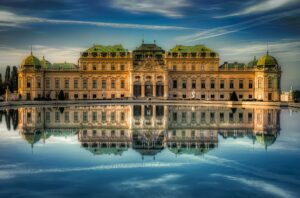
History:
Vienna has a rich imperial history as the capital of the Habsburg Empire. The city has long been a center of classical music, with famous composers such as Mozart, Beethoven, and Strauss having lived and worked there.
Geography:
Vienna is located in northeastern Austria, near the Danube River. The city is known for its stunning baroque architecture, wide boulevards, and elegant coffeehouses.
Top Attractions:
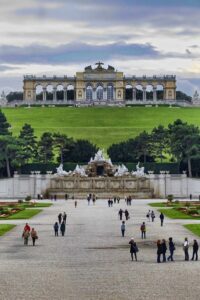
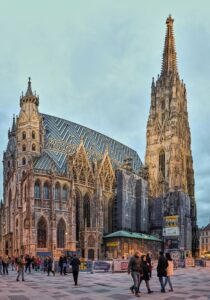
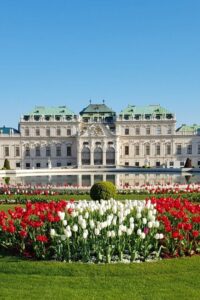
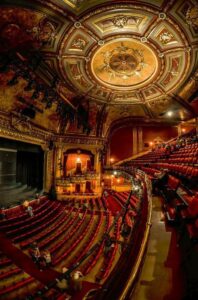
-
- Schönbrunn Palace: A former imperial summer residence with beautiful gardens.
-
- St. Stephen’s Cathedral: A Gothic masterpiece in the heart of Vienna.
-
- Belvedere Palace: Famous for its art collections, including works by Gustav Klimt.
-
- Vienna State Opera: One of the leading opera houses in the world.
Best Hotels:
-
- Hotel Sacher Vienna: Known for its luxurious rooms and famous Sachertorte.
-
- The Ritz-Carlton Vienna: Offering modern luxury in historic buildings.
People and Food:
Viennese people are known for their refined manners and love for art and culture. Traditional Austrian cuisine includes wiener schnitzel, apfelstrudel, and of course, Sachertorte, a famous chocolate cake that originated in Vienna. The city’s café culture is world-renowned.
7. Prague, Czech Republic
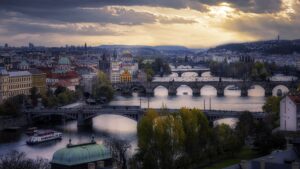
History:
Prague has been a political, cultural, and economic center of Europe for over 1,000 years. Its historical center, a UNESCO World Heritage Site, is filled with medieval and baroque buildings.
Geography:
Prague is located on the Vltava River in the central part of the Czech Republic. The city is surrounded by hills, giving it a picturesque setting with beautiful views from various vantage points.
Top Attractions:
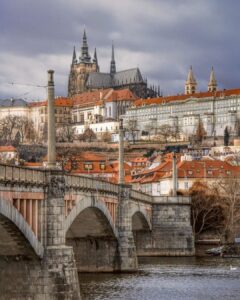
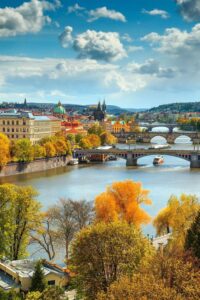
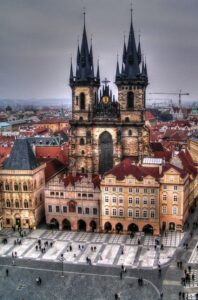
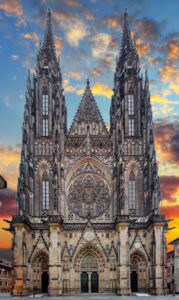
-
- Prague Castle: The largest ancient castle in the world.
-
- Charles Bridge: A historic bridge lined with statues, offering stunning views of the river and the city
-
- Old Town Square: Famous for its medieval Astronomical Clock.
-
- St. Vitus Cathedral: A Gothic cathedral within the Prague Castle complex.
Best Hotels:
-
- Four Seasons Hotel Prague: Offering luxury and views of the historic Old Town.
-
- Hotel Augustine: A beautifully restored monastery turned luxury hotel.
People and Food:
Czechs are known for their hospitality and strong sense of national pride. Traditional Czech dishes include svíčková (beef in cream sauce), goulash, and trdelník, a sweet pastry. Czech beer is world-famous, and the city’s beer gardens are popular spots for both locals and tourists.
8. Berlin, Germany
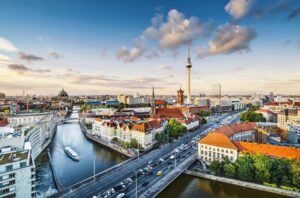
History:
Berlin has played a pivotal role in modern European history, particularly during the 20th century. From being the capital of the Prussian Empire to the site of the Berlin Wall during the Cold War, the city has a complex and fascinating history.
Geography:
Berlin is located in northeastern Germany, with the River Spree running through the city. The city is flat, making it ideal for cycling and walking tours.
Top Attractions:
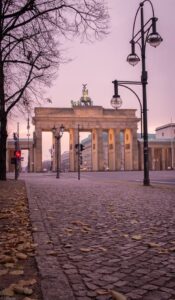


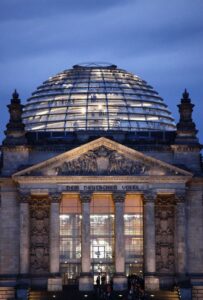
-
- Brandenburg Gate: A symbol of unity and peace, once located near the Berlin Wall.
-
- Berlin Wall Memorial: A powerful reminder of the division of East and West Berlin.
-
- Museum Island: Home to five world-class museums, including the Pergamon Museum.
-
- Reichstag Building: The seat of the German parliament, with a striking glass dome.
Best Hotels:
-
- Hotel Adlon Kempinski: A luxury hotel located near the Brandenburg Gate.
-
- SO/ Berlin Das Stue: A stylish hotel combining modern design with historical elements.
People and Food:
Berliners are known for their openness and innovation, with the city being a hub for artists and creatives. The city’s food scene is eclectic, featuring everything from traditional German bratwurst and sauerkraut to international dishes, thanks to its diverse immigrant communities.
9. Florence, Italy
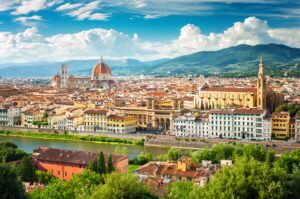
History:
Florence is the birthplace of the Renaissance, and its history is deeply intertwined with art, architecture, and culture. The city was home to great artists such as Michelangelo, Leonardo da Vinci, and Botticelli.
Geography:
Located in the heart of Tuscany, Florence is surrounded by rolling hills and vineyards. The Arno River runs through the city, with picturesque bridges like the Ponte Vecchio crossing it.
Top Attractions:
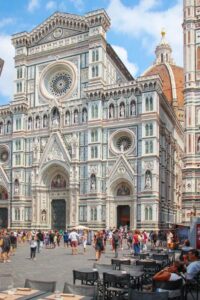
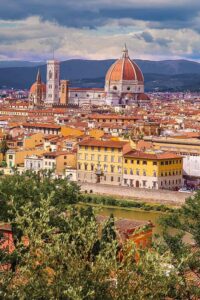
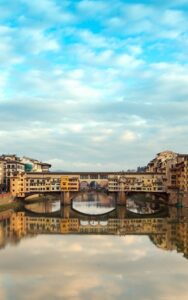
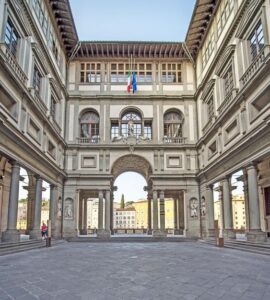
-
- Uffizi Gallery: One of the most important art museums in the world, housing works by Botticelli, Michelangelo, and Raphael.
-
- Duomo (Cathedral of Santa Maria del Fiore): Famous for its red dome designed by Brunelleschi.
-
- Piazzale Michelangelo: Offering panoramic views of the city.
-
- Ponte Vecchio: A medieval bridge lined with jewelry shops.
Best Hotels:
-
- Four Seasons Hotel Firenze: A luxury hotel set in a former convent with beautiful gardens.
-
- Hotel Lungarno: Located on the banks of the Arno River, offering elegant rooms and views of the Ponte Vecchio.
People and Food:
Florentines are known for their strong sense of identity and connection to the city’s artistic heritage. Tuscan cuisine is simple but flavorful, with dishes like bistecca alla fiorentina (Florentine steak), ribollita (a hearty soup), and chianti wine being local favorites.
10. Istanbul, Turkey
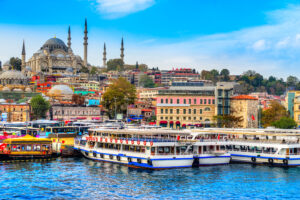
History:
Istanbul, formerly known as Byzantium and later Constantinople, has been a major city for over 2,500 years. It has served as the capital of three empires: the Roman, Byzantine, and Ottoman, making it one of the most historically significant cities in the world.
Geography:
Located at the crossroads of Europe and Asia, Istanbul straddles the Bosporus Strait, giving it a unique position as a city on two continents. Its coastal location and hilly terrain provide stunning views.
Top Attractions:
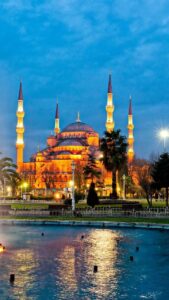
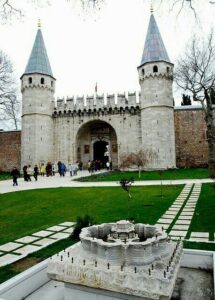


Istanbul cityscape with boats and Suleymaniye Mosque, Turkey.
-
- Hagia Sophia: A masterpiece of Byzantine architecture that has served as both a church and a mosque.
-
- Topkapi Palace: The opulent residence of Ottoman sultans.
-
- Blue Mosque: Known for its stunning blue-tiled interior and six minarets.
-
- Grand Bazaar: One of the largest and oldest covered markets in the world.
Best Hotels:
-
- Four Seasons Hotel Istanbul at Sultanahmet: A luxury hotel in the historic center of the city.
-
- Ciragan Palace Kempinski: A former Ottoman palace turned hotel on the banks of the Bosporus.
People and Food:
Istanbulites are known for their hospitality and cosmopolitan outlook. The city’s food scene reflects its diverse cultural influences, with traditional dishes such as kebabs, baklava, and mezes being must-tries. The city’s street food, such as simit (sesame bread rings) and doner kebabs, is also popular among tourists.
Conclusion:
These ten cities across Europe offer a rich tapestry of history, culture, and stunning landscapes. From the romantic charm of Paris to the ancient wonders of Istanbul, each destination provides a unique experience that sets it apart from the others. With the help of artificial intelligence, this guide provides detailed insights to help travelers make the most informed choices when planning their European adventures. Each city, with its distinct character and attractions, showcases the immense diversity of Europe’s tourism landscape.


